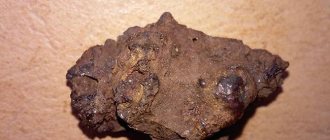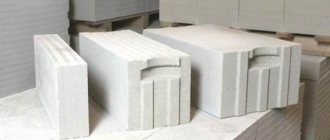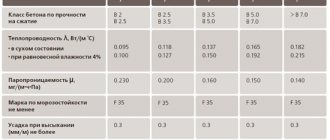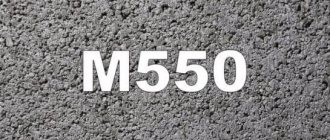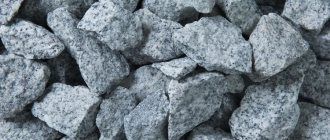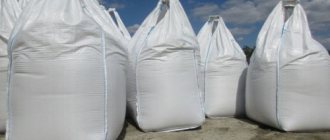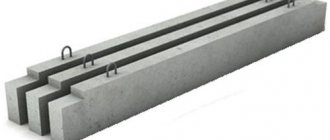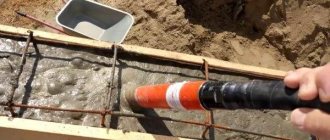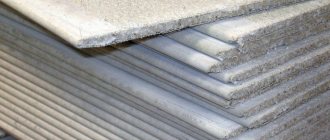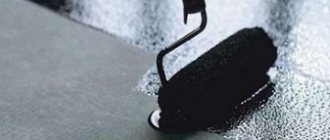Slag is a secondary raw material, waste from the metallurgical industry or ash from the combustion of fossil fuels: coal of all types, oil shale, liquid fuel. In metallurgy, what remains after smelting metal from ore. Fillers for slag concrete, slag pumice, and mineral wool are obtained from ferrous metallurgy slag. Non-ferrous metallurgy waste is divided into conversion and dump slag.
Granular, or granular slag, is obtained by rapidly cooling hot slag with water in a blast furnace or converter process. Having excellent astringent properties, it is used for the production of cement as an active mineral additive to it.
Slag cannot be considered as a simple filler for preparing concrete solutions. In addition to this function, it has another one, which becomes more and more important over time - environmental. Considering how many harmful impurities, from acids and alkalis to carcinogenic compounds, are in its composition, binding it with cement mixtures solves the problem of its safe disposal.
And when smelting metal, the slag component that protects it protects the melt from the effects of combustion products.
Production of bulk materials
Crushed rock comes in three main varieties - granite, gravel and limestone. Granite has the greatest strength and frost resistance; limestone is used to create light-loaded structures. The process of obtaining building material involves blasting monolithic rocks with subsequent crushing of the resulting fragments or open-pit mining. Mountain gravel, used to produce crushed stone, differs from the river gravel familiar to most people in its chemical composition and less smooth surface texture.
Slag crushed stone is created from waste from industrial or steel production. Slags are formed during the melting of raw materials, processing of intermediate products or during the refining of liquid alloys. The waste contains significant amounts of calcium, magnesium, iron, zinc or aluminum oxides. The composition of the final mixture determines the density of the resulting crushed stone, its physical properties and environmental parameters.
The main differences between natural and slag materials
Natural and slag crushed stone can differ significantly in physical properties. The reason for this is the different characteristics of the source materials. There are several key parameters to consider during the selection process:
- Density. Granite remains the most dense material; the minimum values are characteristic of limestone. Slag types of crushed stone have an average density; some waste from ferrous metallurgy is superior to granite in this parameter. Thanks to this, slag remains the most versatile option for bulk materials;
- Strength. Crushed rocks are labeled M1200, their porous counterparts are labeled M400 or M600. The slag covers the range from M800 to M1600, which allows it to be used for casting lightweight or load-bearing concrete structures;
- Moisture absorption. Granite fragments have the greatest resistance to saturation with liquids, while limestone has the least resistance. The characteristics of crushed slag depend on the chemical composition of the raw material and may correspond to dense rocks or be slightly inferior to them;
- Frost resistance. This parameter characterizes the number of freezing/thawing cycles that the material survives without losing its qualities. Grade F300–F400 (300–400 cycles) is typical for natural materials. Slags from the energy industry are certified as F15-F25, steel waste - F25-F50.
Detailed information about the characteristics of bulk materials is provided to buyers by manufacturers or sellers.
GOSTs for construction • GOSTs crushed stone • GOST 5578-2019
buy crushed stone with deliveryPut into effect by Order of the Federal Agency for Technical Regulation and Metrology dated November 12, 2022 No. 1107-st
INTERSTATE STANDARD
CRUSHED STONE AND SAND FROM SLAG OF FERROUS AND NON-FERROUS METALLURGY FOR CONCRETE
TECHNICAL CONDITIONS
Slag crushed sto№ea№d slag sa№d of ferrous a№d №o№-ferrous metallurgy for co№cretes. Specificatio№s
GOST 5578-2019
MKS 91.100.15
Date of introduction June 1, 2020
Preface
The goals, basic principles and general rules for carrying out work on interstate standardization are established by GOST 1.0 “Interstate standardization system. Basic provisions" and GOST 1.2 "Interstate standardization system. Interstate standards, rules and recommendations for interstate standardization. Rules for the development, adoption, updating and construction materials and products" 2 INTRODUCED by the Federal Agency for Technical Regulation and Metrology 3 ACCEPTED by the Interstate Council for Standardization, Metrology and Certification (Minutes dated June 28, 2022 No. 55) Voted for adoption:
| Short name of the country according to MK (ISO 3166) 004-97 | Country code according to MK (ISO 3166) 004-97 | Abbreviated name of the national standardization body |
| Belarus | BY | State Standard of the Republic of Belarus |
| Kyrgyzstan | KG | Kyrgyzstandard |
| Russia | RU | Rosstandart |
| Tajikistan | T.J. | Tajikstandard |
| Uzbekistan | UZ | Uzstandard |
4 By Order of the Federal Agency for Technical Regulation and Metrology dated November 12, 2022 No. 1107-st, the interstate standard GOST 5578-2019 was put into effect as the national standard of the Russian Federation from June 1, 2022. 5 INSTEAD GOST 5578-94
Information on the entry into force (termination) of this standard and amendments to it on the territory of the above states is published in the indexes of national standards published in these states, as well as on the Internet on the websites of the relevant national standardization bodies. In case of revision, modification or cancellation of this standard, the relevant information will be published on the official website of the Interstate Council for Standardization, Metrology and Certification in the catalog “Interstate Standards”
1 area of use
1.1 This standard applies to dense and porous crushed stone and sand obtained from slags of metallurgical production of ferrous and non-ferrous metallurgy of various types and types and used as coarse and fine aggregate of a dense and porous structure for heavy, fine-grained and lightweight concrete, including concrete for coatings and foundations of highways and airfields. 1.2 The standard applies to crushed slag stone with an average grain density from 1.7 to 3.6 t/m3 and to slag sand with the same true density. 1.3 The standard does not apply to road concrete with bitumen binder, as well as ready-made crushed stone-sand mixtures from ferrous and non-ferrous metallurgy slags and phosphorus slags for road construction.
2 Normative references
This standard uses regulatory references to the following interstate standards: GOST 15.309 System for the development and launch of products into production. Testing and acceptance of manufactured products. Basic provisions of GOST 8267 Crushed stone and gravel from dense rocks for construction work. Technical specifications GOST 8269.0 Crushed stone and gravel from dense rocks and industrial waste for construction work. Methods of physical and mechanical testing GOST 8269.1 Crushed stone and gravel from dense rocks and industrial waste for construction work. Methods of chemical analysis GOST 8735 Sand for construction work. Test methods GOST 8736 Sand for construction work. Technical specifications GOST 9758 Porous inorganic fillers for construction work. Test methods GOST 25137 Non-metallic construction materials, crushed stone and dense sand from industrial waste, porous aggregates for concrete. Classification GOST 25820 Lightweight concrete. Technical specifications GOST 26633 Heavy and fine-grained concrete. Technical specifications GOST 30108 Construction materials and products. Determination of the specific effective activity of natural radionuclides GOST 30772 Resource conservation. Waste management. Terms and definitions GOST 32820 Public automobile roads. Crushed stone and slag sand. Determination of slag activity GOST 32826 Public automobile roads. Crushed stone and slag sand. Technical requirements GOST 32858 Public automobile roads. Crushed slag stone. Determination of the stability of the grain structure of slag crushed stone against decay GOST 32861 Public automobile roads. Crushed stone and slag sand. Determination of the content of weak grains and metal impurities Note - When using this standard, it is advisable to check the validity of reference standards and classifiers on the official website of the Interstate Council for Standardization, Metrology and Certification (www.easc.by) or according to the indexes of national standards published in the states indicated in the preface, or on the official websites of the relevant national standardization bodies. If an undated reference is given to a document, then the current document should be used, taking into account all changes made to it. If a referenced document to which a dated reference is given is replaced, the specified version of that document should be used. If, after the adoption of this standard, a change is made to the referenced document to which a dated reference is made that affects the referenced provision, that provision shall apply without regard to that change. If the reference document is canceled without replacement, then the provision in which a reference to it is given applies to the part that does not affect this reference.
3 Terms and definitions
This standard uses terms according to GOST 25137, GOST 25820, GOST 26633, GOST 30772, as well as the following terms with corresponding definitions: 3.1 granular slag: Fine-grained bulk multicomponent material obtained by rapid cooling of liquid hot slag with water. 3.2 grains of lamellar and angular shapes: Grains whose thickness or width is three or more times less than their length. 3.3 metallurgical slag: Product of high-temperature interaction of ore, waste rock of ore materials, metallurgical fluxes and fuel ash in the process of smelting metals from ores, the composition of which depends on their content in the ore, the type of metal being smelted and the characteristics of the metallurgical process, electric furnace slag formed during steel smelting in electric arc steel furnaces. 3.4 sand from granulated slag: Technogenic granular bulk material with a grain size of up to 5 mm, obtained by crushing granulated slag of non-ferrous metallurgy using special crushing and screening equipment. 3.5 phosphorus slag: A by-product of the thermal production of phosphate in electric furnaces at temperatures between 1300 °C and 1500 °C. Note - The slag is drained from the furnaces in a fiery liquid state and granulated using the wet method.
3.6 slag: Secondary mineral resources (hereinafter referred to as SMR), during the processing of which slag crushed stone and slag sand are obtained. Note - A brief description of slag as VMR is given in Appendix A.
3.7 slag pumice crushed stone: Technogenic porous filler obtained on the basis of porousization of melted slag from metallurgical production.
4 Technical requirements
4.1 Slag crushed stone and sand must comply with the requirements of this standard and be manufactured according to technological documentation approved in the prescribed manner.
4.2 Slag crushed stone
4.2.1 Crushed stone is characterized by the following indicators: - structural stability; — chemical and mineral composition, as well as petrographic structure; - strength; - abrasion; - water absorption; — frost resistance; — grain composition; — content of grains of lamellar (flaky) and needle-shaped forms; — content of dust particles, weak grains and metal impurities; — volumetric bulk mass and density. 4.2.2 For preliminary characterization of metallurgical slags for the production of crushed stone by chemical composition in accordance with Appendix A, it is necessary to assess the content and ratio of the main oxides CaO, SiO2, Al2O3, MgO, FeO, P2O5, SO3, SO4. 4.2.3 Crushed stone is divided according to grain size into fractions characterized by the corresponding smallest and largest nominal grain sizes (d and D mm): - from 5 to 10 or from 3 to 10 mm; — over 10 to 20 mm; — over 20 to 40 mm; - over 40 to 70 mm. The use of crushed stone in concrete that does not meet the requirements of GOST 8267, GOST 26633 is possible only after confirmation that all design requirements have been met [GOST 26633 (subsection 3.6, clause 4.5.3)]. 4.2.4 By agreement between the consumer and the manufacturer, crushed stone may be produced in the form of a mixture of two or three adjacent fractions, as well as crushed stone of fractions from 5 to 15, from 10 to 15, from 15 to 20 mm. 4.2.5 The grain composition of each fraction or mixture of crushed stone fractions must meet the requirements specified in Table 1.
Table 1
| Diameter of control sieves holes corresponding to grain size, mm | d | 0.5 (d + D) | D | 1.25D | |
| Total residue on control sieve, % by weight | 90 — 100 | 30 — 80 <*> | 40 — 70 <**> | 0 — 10 | 0 — 0,5 |
| <*> For each faction. <**> For a mixture of fractions. | |||||
When supplying slag crushed stone for the production of concrete used in road construction, by agreement between the consumer and the manufacturer, it is allowed to produce a mixture of crushed stone fractions with a grain content of more than D and less than d up to 20% by weight, with a grain content of less than 0.5 d not more than 10 % by weight. At the same time, the mixture of crushed stone fractions with a maximum grain size of 120, 70 and 40 mm should not contain grains larger than 1.5D, and with a maximum grain size of 20 and 10 mm - greater than 2D. 4.2.6 Crushed stone, depending on the content of lamellar and needle-shaped grains, must comply with the requirements of GOST 8267 (clause 4.3.2). Depending on this indicator, crushed stone is divided into three groups shown in Table 2.
table 2
| Group of crushed stone according to grain shape | Content of grains of lamellar (flaky) and needle-shaped forms, % by weight |
| 1 Cuboid | Up to 15 incl. |
| 2 Improved | From 15 to 25 incl. |
| 3 Regular | » 25 » 35 incl. |
4.2.7 By agreement between the consumer and the manufacturer, when supplying slag crushed stone for the production of concrete used in road construction, it is allowed to produce crushed stone containing more than 35% of lamellar and needle-shaped grains, but not more than 70%. 4.2.8 The strength of crushed stone is characterized by a grade determined by the crushability of crushed stone when compressed (crushed) in a cylinder in a dry or water-saturated state. Crushed stone strength grades for dense crushed stone with an average grain density from 2.0 to 3.0 g/cm3, determined according to GOST 8269.0, must correspond to the values given in Table 3. Determination of the strength of porous aggregate with an average grain density of less than 2.0 g /cm3 is carried out according to GOST 9758 methods.
Table 3
| Crushed stone frost resistance grade | Freeze-thaw: number of cycles | Weight loss after testing, %, no more |
| F15 | 15 | 10 |
| F25 | 25 | 10 |
| F50 | 50 | 5 |
| F100 | 100 | 5 |
| F150 | 150 | 5 |
| F200 | 200 | 5 |
| F300 | 300 | 5 |
It is possible to determine the grade of crushed stone from slag both in a dry and water-saturated state. When obtaining different results, strength is assessed based on the results of tests in a water-saturated state. 4.2.9 In terms of abrasion and frost resistance, crushed slag stone must comply with the requirements of GOST 8267 (clause 4.4.3, subsection 4.6). The frost resistance indicators of crushed stone when tested by freezing and thawing must meet the requirements specified in Table 3. 4.2.10 There are no frost resistance requirements for crushed stone made from active and highly active slags. 4.2.11 The content of weak grains in crushed stone must meet the requirements specified in Table 4.
Table 4
| Crushed stone grade by strength | Content,% by weight, no more | ||
| weak grains in crushed stone from ferrous metallurgy slag (including broken refractory bricks and other impurities such as fluxes) | weak grains in crushed stone from non-ferrous metallurgy slags | Weak pumice-like grains in crushed stone from phosphorus slag (average grain density less than 2 g/cm3) | |
| 1200 | 5 | 5 | 5 |
| 1000 | 5 | 5 | 5 |
| 800 | 10 | 10 | 10 |
| 600 | 20 | 10 | 15 |
| 300 | 30 | 15 | Not standardized |
4.2.12 The content of metal impurities in crushed stone that can be sorted manually should not exceed 5% by weight. 4.2.13 In terms of the content of dust and clay particles, crushed slag stone must comply with the requirements of GOST 8267 (subsection 4.7).
4.3 Sand
4.3.1 Sand, depending on the size of the grains included in its composition based on the total residue on a sieve with mesh No. 063, is divided into groups by size in accordance with GOST 8736 (Table 2). Notes 1 The content in sand from weakly and inactive slag of grains larger than 5 mm should not be more than 15% and grains larger than 10 mm - more than 1% by weight; the content of grains larger than 20 mm is not allowed. 2 The content of grains larger than 5 mm and particles smaller than 0.16 mm in sand from active and highly active slags is not standardized.
4.3.2 The grain composition of sand from granulated slags of non-ferrous metallurgy, obtained by crushing in special crushing and screening equipment, must correspond to the values specified in Table 5.
Table 5
Percentage by weight
| Test sieve hole size, mm | Complete residue on control sieve |
| 2,5 | 0 to 5 |
| 1,25 | » 0 » 25 |
| 0,63 | » 20 » 50 |
| 0,315 | » 50 » 80 |
| 0,16 | » 80 » 90 |
| Passage through sieve No. 016 | » 10 » 20 |
4.3.3 The content of metal impurities in the sand that can be sorted manually should not exceed 3% by weight. 4.3.4 The content of grains in sand with a particle size of more than 10 mm, 5 mm and less than 0.16 mm should not exceed the values specified in Table 6.
Table 6
Percentage by weight, no more
| Sand name | Grain size content | ||
| St. 10 mm | St. 5 mm | Less than 0.16mm | |
| From slag crushing screenings | 0,5 | 0,5 | 15 |
| From granulated slag | 5 | 10 | 20 |
4.4 Characteristics
4.4.1 Losses on ignition in crushed stone and sand, % by weight, should not exceed: - 7 - from dump slag; - 3 - from current output slag and ladle residues. 4.4.2 The content of iron and manganese oxides (FeO + MNOO) in crushed stone and sand from blast furnace slag should not be more than 3% by weight, while the content of sulfide sulfur should not be more than 1.5% by weight. 4.4.3 Weight loss when determining resistance to silicate and ferrous decomposition should not be more than 5% and 8%, respectively. 4.4.4 The content of sulfur and sulfuric acid compounds in crushed stone and sand in terms of SO(3) should not exceed 4.5% by weight. 4.4.5 The content of dust particles, % by weight, should not be more than: - 7 - in crushed stone and sand from the slag of the current output and ladle residues when determined by elutriation; - 1 - in sand from granulated slag of the current yield when determined by swelling; - 3 - in crushed stone from dump slag when determined by elutriation; - 3 - in sand from dump slag when determined by swelling. 4.4.6 The clay content in lumps in crushed stone and sand from dump slag should not be more than 0.25% by weight. 4.4.7 The content of metal inclusions (spins, scrap), % by weight, should not be more than: - 5 - in crushed stone; - 3 - in the sand. 4.4.8 Crushed stone and sand should not contain foreign clogging inclusions. 4.4.9 Crushed stone and sand must be given a radiation-hygienic assessment, based on the results of which the area of its application is determined. Crushed stone and sand, depending on the values of the specific effective activity of natural radionuclides Aeff, are used: - with Aeff up to 370 Bq/kg - in newly constructed residential and public buildings; - with Aeff over 370 to 740 Bq/kg - in newly constructed industrial buildings and structures.
5 Acceptance rules
5.1 Slag, crushed stone and sand must be accepted by the manufacturer's technical control. 5.2 Acceptance and delivery of crushed stone and sand is carried out in batches. A batch is considered to be the amount of crushed stone of one fraction (mixture of fractions), and for sand - one size module, simultaneously shipped to one consumer in one train. When shipping by road, a batch is considered to be the amount of crushed stone and sand shipped to one consumer during the day. 5.3 To verify compliance of the quality of crushed stone and sand with the requirements of this standard, acceptance tests are carried out. 5.4 The manufacturer carries out acceptance control daily by testing a combined sample of crushed stone (sand) taken from each production line. 5.5 During acceptance tests, the following is determined: - for crushed stone and sand - grain composition, content of dust particles; — for crushed stone and sand from dump slag, also the clay content in lumps. 5.6 During periodic tests, the following is determined: - once every 10 days - the content of metallic inclusions, grain shape, losses on ignition, stability of the slag structure against decay; - once a quarter - the activity of the slag, the content of technologically harmful impurities in it, the content of sulfur and sulfuric acid compounds, the content of sulfide sulfur, the content of manganese and iron oxides, strength, bulk density; - once a year - frost resistance of crushed stone, the value of the specific effective activity of natural radionuclides, as well as the content of environmentally harmful impurities that can have a negative impact on the environment and human health; - the value of the specific effective activity of natural radionuclides, the stability of the structure against decay, the content of sulfur and sulphide compounds and sulfide sulfur, manganese and iron oxides, strength and frost resistance are also determined each time the raw materials or technology for the production of crushed stone and sand are changed in accordance with GOST 15.309. 5.7 The manufacturer carries out sampling and preparation of samples of dense crushed stone for quality control in accordance with GOST 8269.0, crushed stone and sand with a porous structure - in accordance with GOST 9758. 5.8 A batch of crushed stone and sand is considered accepted based on the results of acceptance tests if the indicator values comply with the requirements of this standard. If test results are unsatisfactory for at least one of the indicators for this indicator, repeat tests are carried out. The result of the retest is final. 5.9 The quantity of crushed stone and sand supplied is determined by weight or volume. The mass of crushed stone and sand shipped in wagons or cars is determined by weighing on railway and truck scales, shipped on ships - based on the draft of the ship. The volume of crushed stone and sand in the vehicle is determined by measurement. Conversion of the amount of crushed stone and sand in a batch from units of mass to units of volume is carried out according to the value of the bulk density determined in the wet state at the time of unloading. The volume of slag crushed stone and sand at the consumer must be determined taking into account the actual values of bulk density and humidity at the unloading site. 5.10 Each batch of crushed stone and sand must be accompanied by a quality document, which indicates: - the name of the manufacturer and his address; — number and date of issue of the document; — name and address of the consumer; — batch number and amount of crushed stone (sand); — wagon number or vessel number and invoice numbers; — grain composition (fineness modulus) of crushed stone (sand); — content of grains of lamellar and needle-shaped forms; — grade for crushability, frost resistance and abrasion of crushed stone; — losses on ignition; — content of iron and manganese oxides, sulfide sulfur content; — stability of the slag structure against silicate and ferrous decomposition; — content of sulfur and sulfuric acid compounds; - the content of dust particles, and for crushed stone (sand) from dump slag - and the content of clay in lumps; — content of metallic inclusions; — bulk density of crushed stone (sand) indicating humidity at the time of shipment; - average density of crushed stone and true density of sand (at the request of the consumer); — specific effective activity of natural radionuclides in crushed stone (sand); — content of harmful impurities in slag of a certain type; — content of environmental harmful impurities.
6 Control methods
6.1 The grain composition of crushed stone, the content of dust particles, the content of clay in lumps, the shape of grains, strength, frost resistance and abrasion are determined according to GOST 8269.0. For crushed stone and sand for road construction, the determination of parameters should be carried out according to GOST 32826. 6.2 The stability of the structure of slag, slag crushed stone and sand against silicate and ferrous decomposition is carried out by steaming or autoclaving according to GOST 8269.0, for crushed stone used in road construction - according to GOST 32858 6.3 Determination of the mineralogical and petrographic composition and reactivity of crushed slag stone - according to GOST 8269.0. 6.4 The activity of slag is determined according to GOST 8269.0, for crushed stone in road construction - according to GOST 32820. 6.5 Determination of weak grains and metal impurities - according to GOST 32861. 6.6 The total content of sulfur and sulfuric acid compounds, sulfide sulfur is determined according to GOST 8269.0. 6.7 The content of iron and manganese oxides is determined according to GOST 8269.1. 6.8 The specific effective activity of natural radionuclides in crushed stone and sand is determined by the gamma spectrometric method in accordance with GOST 30108. 6.9 The grain composition of sand, the content of lump clay is determined in accordance with GOST 8735, the content of dust particles in sand by the swelling method is determined in accordance with GOST 8269.0.
7 Transportation and storage
7.1 Crushed stone and sand are transported in bulk in vehicles of any type in accordance with the current rules for the transportation of goods and technical conditions for loading and securing goods, approved by the Ministry of Railways, rules for the transportation of goods by road and water transport. When transporting crushed stone and sand by rail, wagons should be loaded taking into account the full use of their carrying capacity. 7.2 Crushed stone is stored separately by fraction, sand - by size modulus under conditions that protect them from clogging and contamination.
Appendix A (reference)
BRIEF CHARACTERISTICS OF SLAG AS A SECONDARY MINERAL RESOURCE
A.1 The basis of metallurgical slags is the oxides CaO, SiO2, MgO and FeO. The increased content of SiO2 in slag makes it closer to acidic, and lime closer to basic. Based on the content of iron oxides, in particular FeO, slags are divided into oxidative and reducing ones. A significant amount of FeO makes the slag oxidizing. Metallurgical slags are complex systems that also contain oxides of Mg, Ba, Cr, and P. In addition to FeO, slags also contain higher iron oxides Fe3O4 and Fe2O3. Sulfur in slags is in the form of sulfides or sulfates of Ca, Mg and Fe. In some cases, slags contain oxides of Ti, B, V and a number of other compounds. The oxides included in the slag are divided into three groups: - acidic (SiO3, P2O5, SO2, SO4), which form silicates, phosphates and sulfates with basic oxides, respectively; — basic (CaO, MgO, FeO), forming corresponding salts with acidic oxides; - amphoteric (Al2O3), which, depending on the content of other components, behave both as acidic and as basic. In slags the most important acid oxide is SiO2. Metallurgical slags are usually alloys of basic oxides with SiO2, which are predominantly silicate formations, so they are sometimes classified according to the ratio of the number of oxygen atoms contained in SiO2 to the number of oxygen atoms included in the basic oxides. The CaO/SiO2 ratio is widely used to characterize blast furnace slag. But due to the significant content of Al2O3 and MgO in the slag, the ratios (CaO + MgO)/SiO2 are also used; (CaO + MgO)/(SiO3 + Al2O3) and other ratios. It is the relationship between basic and acidic oxides that forms three types of slags: - basic - refers to the basic slags; — acidic — mainly SiO2 and Al2O3; - intermediate - with a uniform presence of both types of oxides. Studying the properties of a multicomponent system is very difficult, so such a system is conventionally reduced to a three- or four-component one. The results of studies of the three-component system add information about the influence of other components on it. Metallurgical slags are divided according to the type of metal being smelted into blast furnace, open hearth, converter, electric furnace, ferroalloy, cupola. They can be combined into two groups: slags of primary metallurgical processes - blast furnace and ferroalloy, slags of secondary processes - steelmaking and cupola. Blast furnace metallurgical slags are characterized by variability in composition, determined by the type of charge components: ore, flux and fuel. Slag masses consist of 95% oxides of calcium, silicon and aluminum.
A.2 Persistent and degradable materials
The main distinguishing factor characterizing slag from metallurgical plants is the stability of the structure against all types of decay. There are the following types of decompositions, which determine the structure of the slag as prone to decomposition: - silicate. It is characterized by a significant increase in the volume of the substance due to the transition of calcium silicate from beta to gamma form. The structure of the slag becomes covered with cracks, and then the stone disintegrates into powdery powder; - limestone. The process is a consequence of lime hydration. This type of decomposition is predominantly characteristic of open-hearth slags, manifesting itself as spontaneous cracking of the solid material into pieces; - glandular. Associated with an excess content of unoxidized iron relative to the oxides of this metal. The threshold value is 1.5% of FeO. Exceeding the specified value and exposure to moisture initiate the reaction of the transition of iron sulfide into its hydroxide, accompanied by the release of hydrogen sulfide. As a result, the volume of slag increases to 38%, which leads to cracking; - manganese. Activated when slag is in a humid environment. A.3 The technological process of processing metallurgical slag to produce crushed stone consists of the following stages: - draining liquid waste layer by layer into slag pits. The thickness of each level is from 20 to 30 cm. The maximum number of layers is 5; — watering the slag mass with water at the rate of 0.5 m3 per ton of waste; - crystallization of the composition within 4 - 8 hours; — development of the cooled mass with an excavator; — sorting of slag into fractions, followed by crushing if necessary. Crushed slag stone produced by a similar technological process is distinguished by excellent adhesive characteristics in relation to various building compounds: bitumen, tar, cement. A feature of VMR based on ferrous and non-ferrous metallurgy slags for the production of coarse and fine aggregates for various types of concrete is the significant heterogeneity of the chemical and phase-mineralogical composition, which can lead to a significant content of harmful minerals and impurities that can negatively affect the durability of concrete and corrosion resistance fittings. In addition, slag may contain impurities of heavy metal compounds, which must be taken into account when determining technical requirements for products obtained from slag.
| UDC 691.22:669.162.144:006.354 | MKS 91.100.15 |
| Key words: crushed stone, sand, blast furnace slag, aggregates | |
| GOST construction standards: | |
| Buy crushed stone with delivery in Moscow, Moscow region Buy gravel with delivery in Moscow, Moscow region |
Areas of application of crushed stone
The use of granite crushed stone is justified when carrying out construction work in extreme conditions: in regions with significant temperature changes, deeply frozen soils or significant amounts of precipitation. Examples include the construction of railway embankments in the Arctic Circle or the formation of concrete dam bodies.
The conditions of central Russia and the south of Russia make it possible to use slag crushed stone for any type of construction work: building roads, pouring load-bearing elements of buildings, pouring foundations, creating concrete mixtures, producing small architectural forms (urns, benches, fences).
Use of slag in construction
In construction it is mainly used as fillers for concrete mixtures. Slag is a waste from metallurgical production, as it is safer than waste from coal combustion. After all, fossil coal (brown, black stone and anthracite) necessarily contains radionuclides. Their share in the source material is low, but during combustion their concentration increases sharply, and in brown and hard coal reaches values that are unacceptable from a sanitary point of view. So such slag is not suitable for concrete walls, or for the construction of concrete basements, or for pouring screeds; the radioactive background in such premises may exceed the maximum permissible limit.
Granulated slag, used in the production of cements with exceptional binding properties, makes it possible to obtain floor slabs that are very resistant to tearing and splitting in multi-story construction. And granulated slag with larger fractions is used in concrete as a filler to produce strong and lightweight building blocks, which differ from ordinary bricks in wear resistance, low specific gravity, and good moisture and heat insulation properties.
Fine granulated slag (including dust) is used as a raw material for the production of slag wool, as well as for the production of paving slabs, curbs and paving stones. Its crumbs are added to concrete mixtures to strengthen them, as well as to fill voids during the construction of buildings with bulk walls.
The presence of calcium silicates in such slags allows the use of fine grinding for mixtures with cement, which gives the same effect when creating structures as that of Portland cement. The use of such additives allows:
• create heavy and especially strong concrete of strength classes B15-B30.
• Produce dry construction mixtures
• Manufacture floor slabs, beams, columns, concrete panels, beams and other prestressed building structures.
• Build cellars, foundations of any degree of complexity, which are made by concrete pouring, cast floor slabs and pour them into sliding formwork when constructing walls.
Advantages of slag crushed stone
The main advantages of crushed stone made from slag are low price and optimal combination of characteristics. There is no need for geological exploration, rock blasting, delivery of raw materials to the crushing site and subsequent storage significantly reduces the costs of the manufacturing company. Minimizing costs ensures an almost twofold difference in the cost of granite and slag crushed stone. Thus, a ton of crushed rock with a fraction of 5–20 mm will cost the buyer 550–700 rubles. Slag with similar parameters will cost from 250 rubles per 1000 kilograms.
The characteristics of slag crushed stone allow it to be used in any area - from the construction of multi-lane roads to pouring the foundations of private houses. The environmental friendliness of the material ensures safe long-term operation of the constructed facilities.
Cooperation with TEMP LLC
The Taganrog Experimental Industrial Project produces crushed stone from blast furnace slag. The material of various fractions (0.5–70 mm) is used in road construction and the production of concrete structures, when pouring foundations and laying drainage for sports facilities, for decorative design of urban spaces or creating a primary coating on primers.
TEMP LLC provides wholesale supplies of crushed stone to any point in Russia by road, rail, sea or river transport. The cost of material of different fractions can be checked with managers by calling 8-8634-43-05-80 (Taganrog) and 8-495-125-01-06 (Moscow) or in the catalog on the company website. Deliveries of large quantities are carried out under special conditions.
Types of slag
Metallurgical
They are divided into slags of non-ferrous and ferrous metallurgy. Ferrous metallurgy slags include:
- Blast furnace slag , obtained by smelting cast iron from iron ores. Its properties depend on the melting conditions used to produce fuel melts and flux additives.
- Steelmaking . They are produced in open-hearth, converter or electric furnace production.
- Ferroalloy . Types of ferroalloy slag are divided into subtypes with a predominance of the element that was added to the molten steel to obtain the ferroalloy, and this can be cobalt, chromium, manganese, molybdenum, silicon, etc.
Non-ferrous metallurgy slag : these include waste from copper, nickel, lead and zinc production.
Phosphorus
They are obtained as waste from the production of phosphate fertilizers. Used in the production of pumice or mineral wool. It is added as an additive to cement only if concrete products made from such cement go through the stage of high-temperature steaming.
Ash
They are a residue from the combustion of hard coal and oil shale. They are not used in practical use in residential construction due to the high content of radionuclides in them, but can be used in the production of paving slabs or if they are used as fillers for asphalt mixtures, where the possible formation of dust will be bound by resinous fractions. The method of cooling these slags immediately after their formation is also important: if cooling occurs with water, that is, quickly, a glassy structure is formed, which is more stable than the microgranular one obtained with slow, natural cooling.
